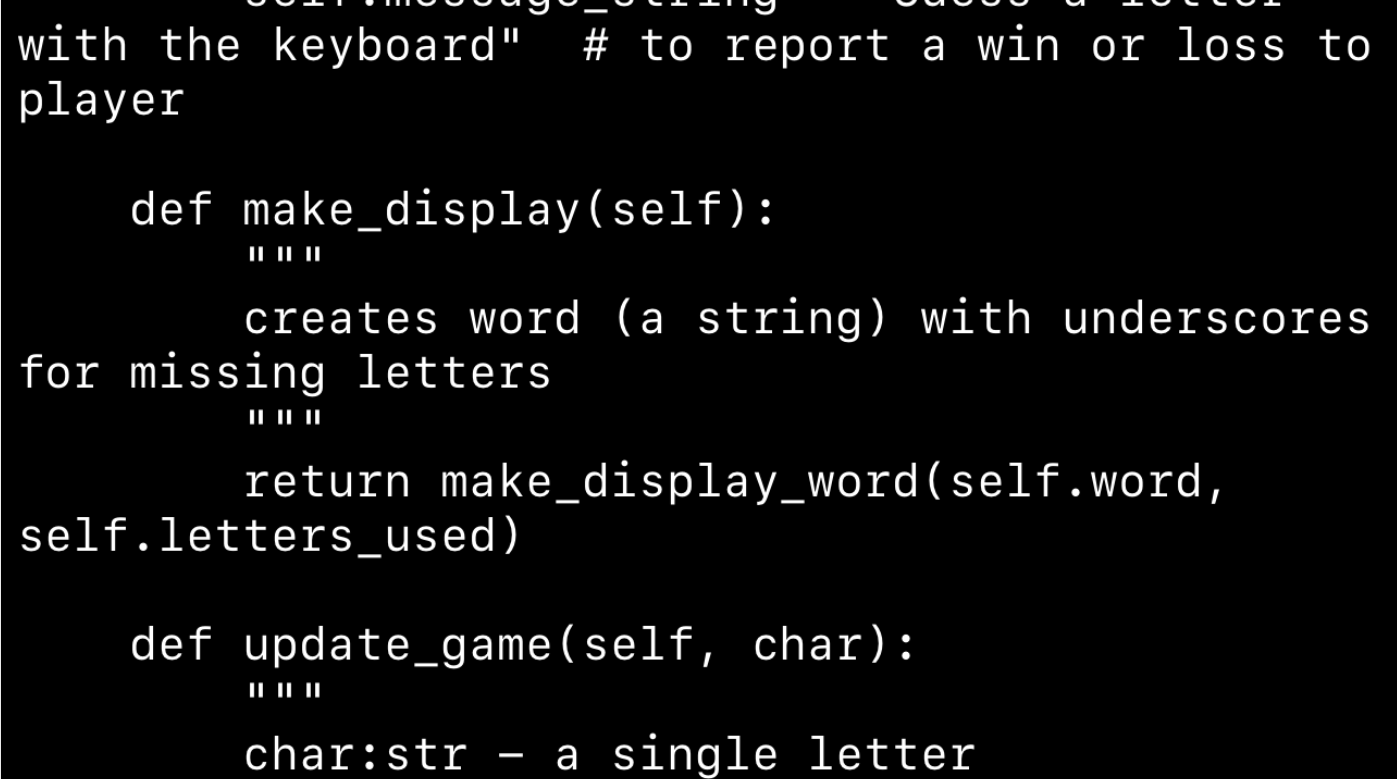CODING HANGMAN
Embarking on a journey into the realm of computer science as a major, I found myself at the threshold of a new world, one that was both intimidating and exhilarating. My first encounter with this world was through an introductory programming course, a venture into the unknown, as I had never coded before. The task at hand was not just to learn a programming language, but to use it to create something tangible: a Hangman game. This challenge led me to question, “In what ways can I think about this problem?” It was a query that would soon become a guiding principle in my studies and beyond.
Tackling Programming as a Novice
As a novice in programming, every concept and line of code felt like deciphering a foreign language. To keep pace with my peers who had previous coding experience, I had to adopt a rigorous self-teaching regimen. This included spending extra hours after class to review lecture materials, seeking additional resources online, and practicing coding extensively. I made a habit of breaking down each programming task into smaller, manageable parts, which I would then methodically work through. This approach required more time and effort than what might have been necessary for those already familiar with coding. The task of building a Hangman game, a task that seemed deceptively simple at the outset, quickly revealed the complexities of programming. Each function and variable was a puzzle piece, and my job was to figure out how they fit together to bring this classic word game to life. It was a daunting task, yet there was an underlying excitement in facing this challenge, a sense of intrigue in the process of creating something from nothing.
Adopting a Programmer’s Mindset
This project required me to adopt a new way of thinking. No longer was it just about solving problems, but about how to approach them from a programmer’s perspective. “In what ways can I think about this problem?” became a mantra. I had to break down the game into its core components – understanding the rules, determining how to represent words and guesses, and figuring out how to give feedback to the player. This methodical breakdown was not just about writing code; it was about logical structuring and problem-solving, skills that are the bedrock of computer science.
Overcoming Obstacles and Debugging
The journey was riddled with obstacles – bugs in the code, logic errors, and moments of doubt. Each error was a lesson in patience and perseverance. Debugging became a crucial part of the learning process, teaching me that making mistakes was an integral part of learning to code. To anticipate potential issues, I learned to think like a user, considering various ways the program might be used or misused. For example, I would test my code with unexpected inputs or scenarios to see if it could handle them gracefully. I also learned to look for common pitfalls in coding, like off-by-one errors or unhandled exceptions, which could cause the program to fail. These challenges honed my analytical skills, teaching me to scrutinize my code, think critically about every solution I implemented, and foresee issues before they arose, ensuring more robust and reliable outcomes.
Building a Foundation in Computer Science
Today, as a computer science major, the experiences of building that Hangman game resonate deeply in my current studies. The skills I developed during that project – logical thinking, problem-solving, and perseverance – are ones I apply in every new programming challenge I encounter. The game was a foundational experience, laying the groundwork for my understanding of programming concepts and logic (such as control structures, data types, and error handling). It was my first step into a world where problems are not roadblocks, but opportunities for innovation and creativity. Each concept I encountered while building the game, no matter how small, contributed to a comprehensive skill set that I continue to build upon in my studies.
